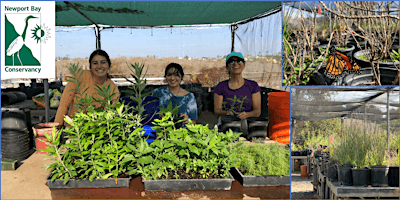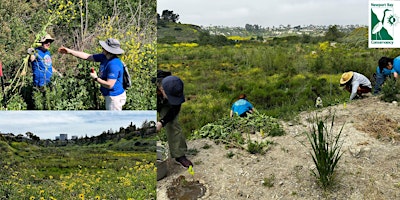 Super Dog: Your Everyday, Local Coyote
Super Dog: Your Everyday, Local Coyote
Adapted from an Article by Naturalist Rosemary Flynn that appeared in the Sept. 2005 edition of Tracks.
If there were ever a competition for “charismatic outlaw” in the animal kingdom, the coyote would most certainly be a contender. Beloved as much as it is maligned, the coyote is among the few species that have actually expanded their territory in the face of urbanization. Indeed, they seem to have thrived despite man’s best efforts to eradicate them. Today, this member of the dog family is found from Alaska to Florida and from California to Maine.
Physical Features
The word “coyote” is of Spanish derivation and has its origins in Nautauhl, the language of the Aztec Indians. Less exotic but certainly descriptive, the coyote’s scientific name, Canis latrans, translates as “barking dog.” Physically, the coyote measures from the nose to base of tail approximately 32 to 37 inches. The bushy, black-tipped tail may be as long as 16 inches. Weight ranges from 20 to 50 lbs with females typically being smaller than males. The nose has a narrow pad and the ears are pointed. As with many of the dog species, there is a great variation in color ranging from combinations of gray or buff on the head, neck and back. Lower parts are generally a slightly lighter color.
It has been said that a number of the wild dog species look alike. This is particularly true, assuming size is ignored, for the coyote and wolf. Indeed, compare a big coyote with a small wolf, say researchers, and it would take a microscope to confirm the distinctions, namely the coyote’s larger brain cavity and slimmer muzzle. It is no a surprise, then, that coyotes have been known to breed with a wolf as well as with other Canis species, including domestic dogs.
Behavior
It is in terms of behavior, however, that the differences between coyotes, wolves and other wild dog species become most apparent. Indeed, many scientists believe that it is their adaptive behavior and a flexible social structure that explains the coyote’s success living in and adjacent to the urban interface. For example, coyotes do not run in packs and are relatively tolerant of others of their species. Their social structure is based on a loose hierarchy where the young are subservient to adults, males are subservient to females, and females are supportive of other females (they will even raise young in the same den). In addition, coyotes mate for the long term and while they may be somewhat territorial, it is not to an exclusive degree. For this reason, the availability of food or a large kill can bring any number from outside a territory without conflict occurring.
The fact is that the coyote is not exclusive about anything! Adaptability is their hallmark. Typically, in preparation for a birth, the family may dig a den, or they may adopt one abandoned by another species. Any one den may be used for several years, so long as it is clean of fleas and remains accessible. In addition, the male mate and siblings from previous litters will often contribute to raising the new family. The male’s role, however, is usually limited to providing food by means of regurgitation.
These patterns are quite a contrast to the social behavior of wolves where the alpha male dominates the pack, intimidating other males in order to mate with the females and father most of the offspring. This said, it is worth noting that historically the pack structure has served the wolf species well, particularly for purposes such as taking down large prey (e.g., elk, deer, moose). Sadly, in recent years, the wolf has not thrived as well as the coyote. As a result, the species has largely abandoned much of their original territory in favor of more remote, less populated wild-lands. It is no surprise that the coyote, ever the opportunist, has stepped in to fill the role of predator that was subsequently left open by the wolf.
Food
When it comes to hunting, the coyote’s reputation for being extremely fast and resourceful is well earned. Despite what have been called spindly legs, these animals are quick and lithe, capable of running up to 40 mph and clearing an eight-foot fence. They tend to hunt individually but, again, not exclusively. Occasionally, a pair may team up relay-style to run down a rabbit or other prey. In terms of eating, coyotes are equally as resourceful and decidedly not picky. In fact, the coyote is said to “eat anything animal or vegetable….” This means, in addition to their main diet of mice, rabbits and other rodents, everything from carrion to fallen apples to grasshoppers. Also, in contrast to most dog species, a coyotes will even cache uneaten food to have for another day.
As a predator, coyotes have been known to kill livestock. Coyote supporters say that only injured animals, maimed most likely by some rancher’s trap, are killed. Historically, however, ranchers feel differently. Locally in Orange County, the concern is mostly for pets. Indeed, each year there are a number of cats and small dogs reported as being attacked, and sometimes killed by coyotes. No doubt, given the coyotes’ natural instincts it is difficult for them to pass up what may seem like an “easy meal.” As such, anyone with a small pet in coyote territory is advised to keep pets properly fenced or leashed and to feed them inside. Assuming such precautions are taken, the coyote can be recognized for what he is— an important part of the ecosystem— rather than being labeled as a threat to man and his pets.
An Icon
For all its brashness—or perhaps because of it— the coyote has staked a starring role in American culture. Pueblo, Apache and Navajo tribal traditions and stories all feature the coyote. Among the Navajos, in particular, “the coyote is an essential being… representing a vital force of restlessness and energy …that moves between the categories of human-god-animal, good and evil, testing the forms and realities of the world.”
Today, the coyote is still an essential being. Indeed, as one of the few remaining native predators in the region, he is an integral part of the ecosystem, a testament to the current health of Upper Newport Bay and a symbol of hope for the continued restoration of urban open space areas.










